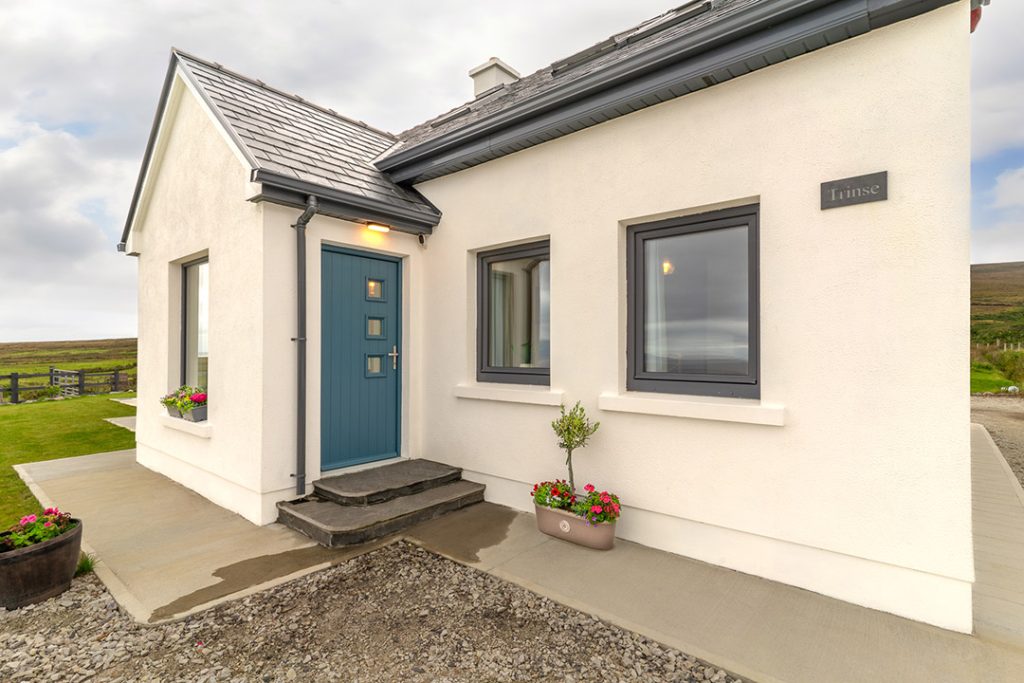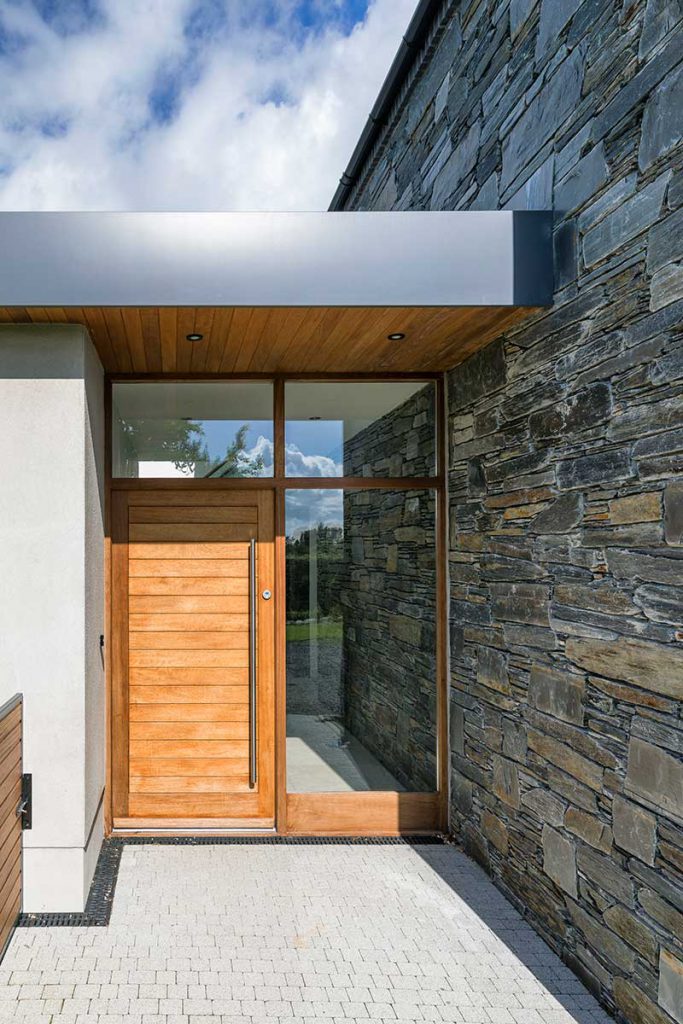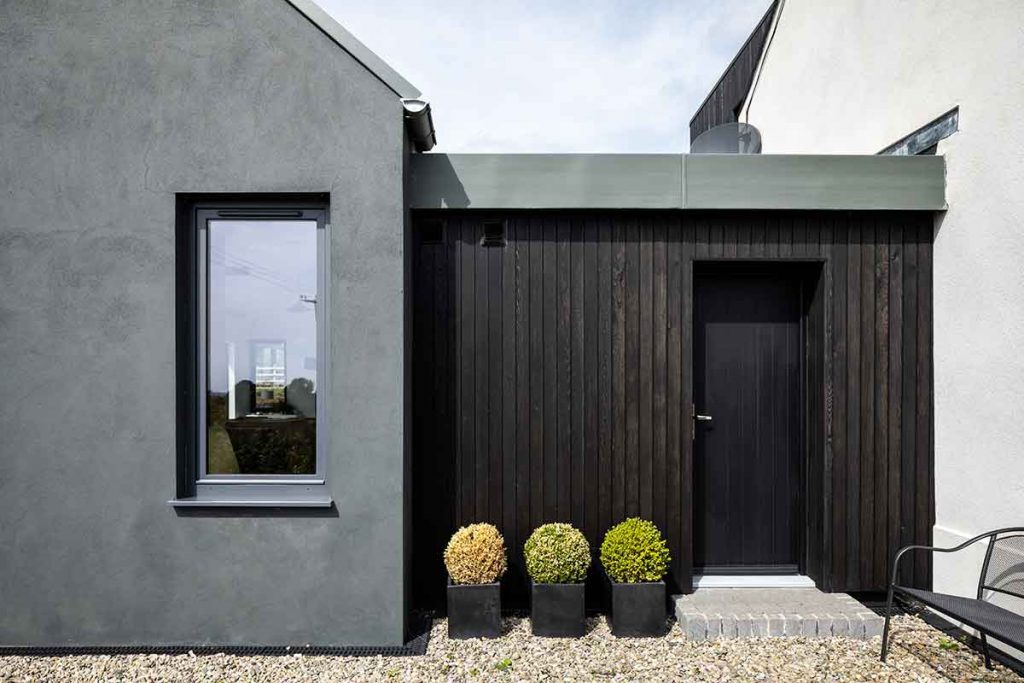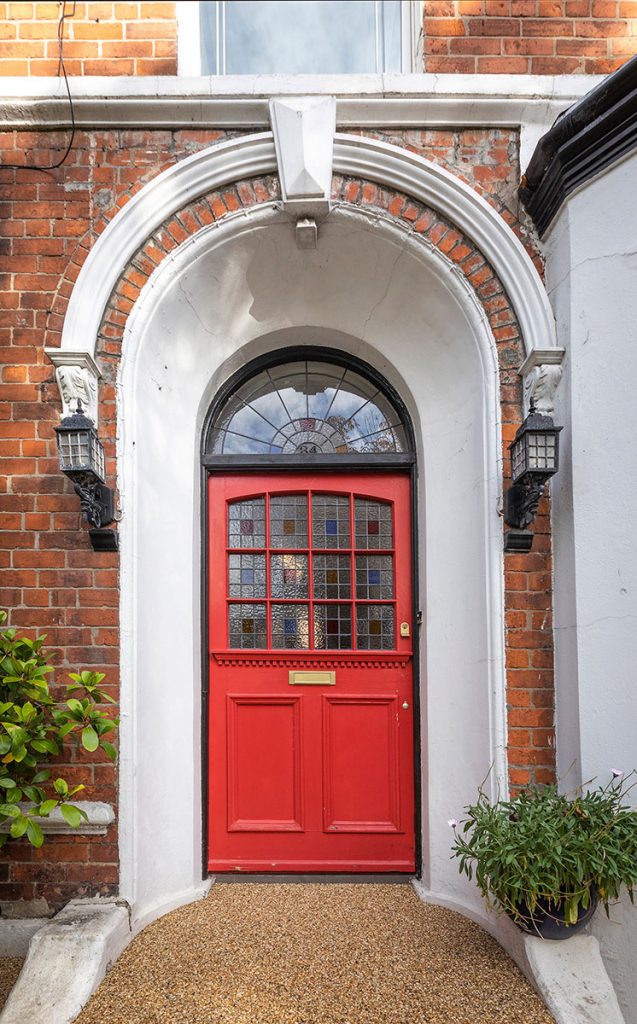Whether it’s a grand entryway or a discreet side entrance, doors are pivotal in expressing homeowners’ personalities, distinguished by size, colour, and style. This article will explore the intricacies of door selection for homeowners, focusing on aesthetics, materials, functionality, and security.
The Significance of Front Doors
The front door, being the focal point of a home, demands thoughtful consideration in its styling. Diverse methods, like contrasting frame colors, stained glass applications, or sheer size, can accentuate its appeal. It’s vital to maintain a harmonious balance, allowing the front door to stand out while keeping other doors, like garage doors, in neutral tones to avoid distraction.

Deciphering Door Construction
The outward appearance of a door doesn’t always reveal its construction. Many doors may seem solid but are either laminated or framed. The construction quality depends on the type of framing, materials used, and whether it employs laminates or veneers. Solid cores of MDF or chipboard with hardwood exterior layers are common, offering varying quality and price points.
The Appeal and Efficiency of Composite Doors
Composite doors, characterized by a glass-reinforced plastic panel, are superior to PVCu doors in strength, thermal efficiency, and aesthetic appeal, often featuring an eight-point locking system. Glazed PVCu doors prioritize security, incorporating features like anti-drill key cylinders and integral locking systems to deter unwanted intruders.
Style Considerations
The chosen style should complement the overall house aesthetics, focusing on compatibility with windows to create a coherent impression. Entrance doors can be solid or glazed, each offering different advantages and challenges in terms of weather resistance, maintenance, and appearance. The material choice, whether wood, steel, or uPVC, plays a crucial role in the door’s longevity and performance.
Security and Material Choice
Security is paramount for external doors. The robustness of the door frame is as important as the door itself. Different locking mechanisms can enhance security, and the selection of door furniture can also impact the overall aesthetic. A combination of materials, like fibreglass with a foam insulation core, can offer enhanced security and thermal performance, providing versatile solutions for varying needs.

Patio Doors and French Windows
These pose unique challenges and opportunities. French windows offer a traditional appeal, while sliding patio doors fit well in modern settings. Security considerations include the installation of appropriate locks and reinforcements to prevent forced entries. The choice between different glazing options can also impact security and light availability in the living space.
Adherence to Building Regulations
Building regulations mandate specific requirements, including fire barriers for doors on escape routes. These regulations aim to maintain a protected route in the event of a fire, ensuring the safety of the occupants. Additionally, considerations for wheelchair access dictate the threshold construction, impacting draught and rainwater intrusion.
Maintaining Thermal Efficiency
A well-insulated door helps in maintaining internal temperatures. The integration of brush or neoprene seals, portieres, or draught lobbies can mitigate heat loss through entrances. Attention to details like keyholes and letterboxes can further reduce draughts, maintaining a comfortable internal atmosphere.
Aesthetic Enhancements
Slight variations in paint tones or stains can add a touch of elegance to panelled doors. The current trend leans towards light-colored woods like pine, with veneered doors offering more stability due to their resistance to moisture. Aesthetic considerations also include the addition of finger plates and hinges, which can be decorative yet functional.

Choosing New or Reclaimed Doors
While reclaimed doors add character, finding one of venerable lineage is challenging due to the exposure to elements over the years. Those from grander houses with polished finishes are scarcer, hence the need to carefully compare options based on timber type and thickness. Having a door made from new materials, replicating a desired design, can be a practical alternative.
Interior Doors
Beyond the need for security and weatherproofing, interior doors offer more flexibility in choice. The door type, whether framed or composite, glazed or unglazed, impacts the overall project cost. Innovative use of paint and mouldings can transform a basic product into an eye-catching element, offering unique solutions for different rooms or creating large, flexible spaces for events.
Conclusion
Doors, serving as a significant element in a home’s exterior, necessitate a thoughtful blend of style, functionality, and security. The variety in construction, materials, and aesthetics offers numerous possibilities for homeowners, allowing the customization of doors to suit individual preferences and needs, while complying with building regulations and considering environmental factors. Whether opting for new or reclaimed doors, a well-chosen door can be a defining feature of a home, reflecting the homeowner’s personality and taste.





